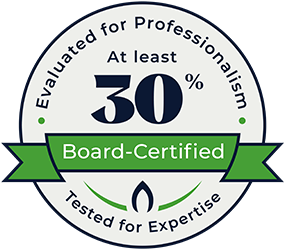
Condo Terminations in Florida: Process, People, and Practical Steps
By Michael E. Chapnick, Partner at Sachs Sax Caplan
Florida’s condo landscape continues to evolve. Safety rules and reserve requirements are now fully in play, while insurance costs remain high. For some aging buildings, boards and owners are weighing whether continued special assessments make sense — or whether a structured termination and redevelopment is the better path.
What the law requires
Condominium terminations in Florida follow a strict statute. In most residential cases, a plan of termination must be approved by at least 80% of the total voting interests. The plan cannot proceed if 5% or more of the voting interests object in writing. The statute also addresses valuations, notices, trustee duties, liens, and dispute rights, and it limits re-submitting a rejected plan for 24 months.
Aligning with 2024–2025 safety timelines
The legal calendar for termination now sits alongside inspection and reserve deadlines. Lawmakers clarified that milestone inspections apply to buildings with three or more habitable stories, refined reporting, and kept the inspection/reserve framework moving. Boards should map those deadlines early and communicate them plainly so owners understand why timing matters.
In 2024, HB 1021 added transparency and governance provisions for associations, including official-records requirements, education and reporting elements, and distribution of structural integrity reserve studies. These duties continue during any pre-termination period and affect what information boards must share with owners.
A people-first process
Terminations are legal transactions — and they are personal. Owners have roots, plans, and budgets to consider. Clear, consistent communication (what inspections found, what reserves require, what alternatives exist, and how the plan protects rights) reduces anxiety and conflict, helping the community make informed choices. Documenting each step protects the association and demonstrates good faith.
Practical roadmap
- Pre-feasibility: Review options such as repair, special assessment, or termination; assess owner and investor interest.
- Owner communications: Publish a simple summary, FAQs, key dates, and a central repository for notices and reports.
- Plan of termination: Coordinate with counsel to prepare the Plan of Termination; prepare for disputes, trust administration, and winding-down obligations.
- Regulatory alignment: Calendar milestone inspections, reserve-study distribution, and any agency reporting so the association stays compliant while decisions are made.
Bottom line
Successful terminations respect both the statute and the community. When boards pair tight legal compliance with transparent owner engagement, the path forward becomes clearer and more workable for everyone.
Contact Michael E. Chapnick or the Sachs Sax Caplan Association Law Group to explore your options.
When you subscribe to the blog, we will send you an e-mail when there are new updates on the site so you wouldn't miss them.

Sachs Sax Caplan, P.L. is proud to be recognized by The Florida Bar for our commitment to hiring and developing Board Certified Attorneys.

